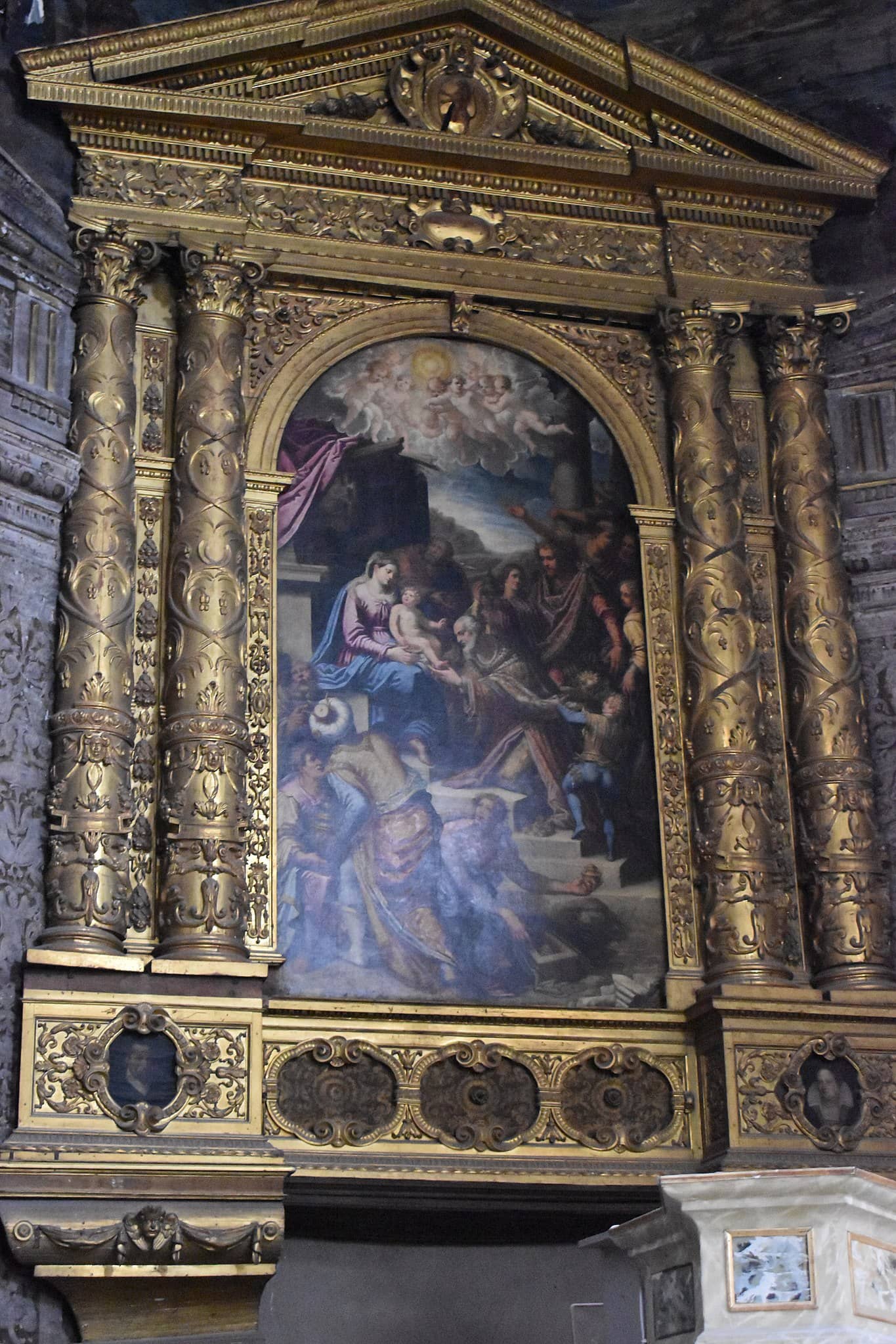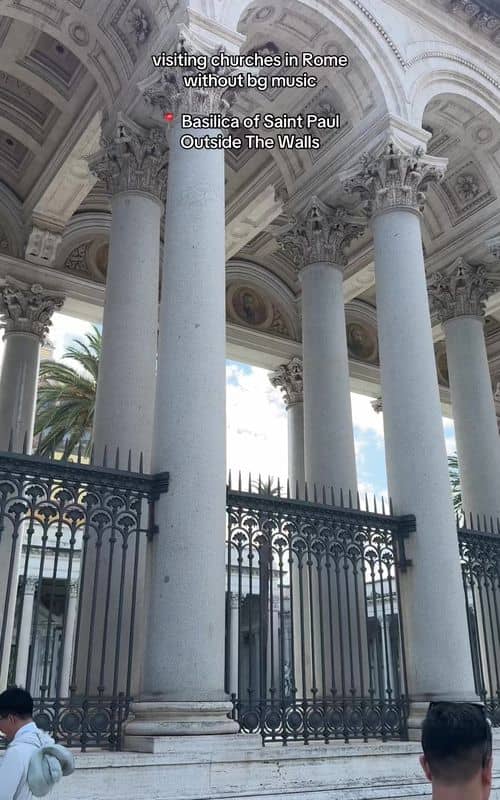Chiesa di San Paolo
A Renaissance masterpiece in Ferrara, Chiesa di San Paolo showcases stunning frescoes, altars, and cloisters after extensive restoration.

Highlights
Must-see attractions

Social
From TikTok & Reddit
Best Time
Fewer crowds, peaceful atmosphere
Chiesa di San Paolo
Best Time
Fewer crowds, peaceful atmosphere

Highlights
Must-see attractions
A Renaissance masterpiece in Ferrara, Chiesa di San Paolo showcases stunning frescoes, altars, and cloisters after extensive restoration.
"A magnificent Renaissance church, recently reopened after years of restoration, not to be missed."
Check Restoration Status
Some paintings might still be hidden. Call ahead to confirm what's visible post-restoration. :informationdeskperson:
Inquire About Tours
Guided tours offer deep dives into history and art. Ask about availability upon arrival. :guide_dog:
Highlights
Discover the most iconic attractions and experiences

Renaissance Frescoes
Side Chapels
Admire the vibrant frescoes, a testament to Renaissance artistry, recently unveiled after restoration.
Monumental Altars
Main Altar
Behold the grandeur of the monumental altars, showcasing intricate craftsmanship and historical significance.
Renaissance Cloisters
Adjacent to Church
Explore the two intact Renaissance cloisters, rebuilt after a fire, offering a serene architectural experience.
Plans like a pro.
Thinks like you
Planning Your Visit
Timing Your Visit for Tranquility
Understanding Access and History
Best Times
Insider Tips
from TikTok, Instagram & Reddit
Check Restoration Status
Some paintings might still be hidden. Call ahead to confirm what's visible post-restoration. :informationdeskperson:
Inquire About Tours
Guided tours offer deep dives into history and art. Ask about availability upon arrival. :guide_dog:
Respectful Attire
As a place of worship, dress modestly. Shoulders and knees should be covered. :dress:
Photography Etiquette
Check for any 'no photography' signs, especially near altars or sensitive artworks. :camerawithflash:
Tips
from all over the internet
Check Restoration Status
Some paintings might still be hidden. Call ahead to confirm what's visible post-restoration. :informationdeskperson:
Inquire About Tours
Guided tours offer deep dives into history and art. Ask about availability upon arrival. :guide_dog:
Respectful Attire
As a place of worship, dress modestly. Shoulders and knees should be covered. :dress:
Photography Etiquette
Check for any 'no photography' signs, especially near altars or sensitive artworks. :camerawithflash:
What Travellers Say
Reviews Summary
Visitors praise Chiesa di San Paolo for its significant historical and artistic value, especially after its recent reopening post-restoration. The Renaissance frescoes, altars, and cloisters are frequently highlighted as must-see features. Some note that certain areas might still be under restoration, and access may occasionally require arrangement.
"Church of great historical and artistic value. Still archeological research is undergoing to uncover proto church structures and frescos still laying underneath the pavement or covered by the current visible walls. Open on call for visits I believe nor I believe there's tickets or any form of billing for visits once arranged."
Mad Mass
"A magnificent Renaissance church in the city center. Recently reopened after years of restoration, although the paintings in the side chapels are still hidden, you can still admire the splendid frescoes, organ, marble floor, and monumental altars. One of Ferrara's jewels, not to be missed."
Cristiana Rimondi
"The church recently reopened after years of closure for restoration."
Andrea927
What People Like
What People Dislike
Frequently Asked Questions
🚇 🗺️ Getting There
Chiesa di San Paolo is located in the city center of Ferrara, Italy. It's easily accessible by foot if you're already in the historic district. Public transport options include local buses that stop near the church. Parking can be challenging in the city center, so consider public transport or walking.
Yes, the church is centrally located and close to many of Ferrara's main attractions, including the Este Castle and the Cathedral. This makes it easy to combine a visit with other sightseeing.
Ferrara is well-connected by train to major Italian cities like Bologna, Venice, and Florence. The train station is a short bus or taxi ride from the historic center.
🎫 🎫 Tickets & Entry
Generally, there are no tickets or billing for visits, especially if arranged. However, it's always best to confirm current access policies, as some areas might have specific viewing arrangements.
The church has recently reopened after restoration. While it should ideally be open, it's advisable to check for specific opening hours or if visits need to be arranged in advance, as hours can vary.
Based on user experiences, there isn't typically a fee for visiting. However, donations are often appreciated to help with the upkeep of historical sites like this.
The two Renaissance cloisters are generally intact and can be admired. Access to other parts of the complex, especially those still undergoing archaeological research or restoration, might be limited or require special arrangements.
🎫 🏛️ Onsite Experience
Originally built in the 10th century, it was entrusted to the Carmelites in 1295. It underwent significant reconstruction after a 1570 earthquake, resulting in the current Renaissance structure. It also served various purposes, including a prison, before its reopening.
Visitors can admire splendid frescoes in the side chapels (though some may still be hidden), a beautiful organ, intricate marble floors, and monumental altars. The church is a significant example of Renaissance architecture and art.
The church offers many beautiful architectural details and artworks for photography. However, always be mindful of any restrictions, especially around the altar or during services.
Yes, archaeological research is ongoing to uncover proto-church structures and frescoes beneath the current pavement and walls, adding another layer of historical intrigue to the site.
🍽️ 🍽️ Food & Dining
Yes, being in the city center, there are numerous restaurants, cafes, and trattorias surrounding Chiesa di San Paolo, offering a variety of local Ferrara cuisine.
When in Ferrara, try 'cappellacci di zucca' (pumpkin-filled pasta), 'salama da sugo' (a cured pork sausage), and 'torta tenerina' (a rich chocolate cake).
📸 📸 Photography
Focus on the details of the frescoes, the grandeur of the altars, the patterns of the marble floor, and the architectural beauty of the Renaissance cloisters. The interplay of light and shadow can be particularly striking.
While generally permitted, it's always wise to check for specific signs indicating 'no photography' areas, especially near sacred objects or during religious services.
Late morning or early afternoon often provides good natural light filtering into the church. The cloisters can also be beautiful when bathed in sunlight.
For Different Travelers
Tailored advice for your travel style
👨👩👧 Families with Kids
Keep in mind that it is an active place of worship, so maintaining a quiet demeanor is important. The cloisters provide a safe, open space for children to walk around briefly. Pack snacks and water, as dining options might be limited directly within the church complex.
🏛️ History Buffs
Delve into the details of its architectural evolution, from its early foundations to its Renaissance transformation. Understanding its connection to the Este family and the Carmelite order provides crucial context for its historical significance. Don't miss the chance to learn about the layers of history being uncovered beneath the surface.
🎨 Art Lovers
Take time to appreciate the craftsmanship of the organ and the overall aesthetic of the church's interior. Even if some artworks are still undergoing restoration, the existing pieces offer a profound artistic experience. Consider researching the artists or periods represented to enhance your appreciation.
Deep Dives
In-depth insights and expert knowledge
A Journey Through Time: The History of San Paolo
The church's resilience is evident in its reconstruction after the devastating earthquake of 1570. The current building largely dates from 1575, with its consecration in 1611. This reconstruction preserved a portion of the original wall, on which some frescoes survived, offering a glimpse into its earlier iterations. Later, in the 19th century, the monastery complex was repurposed as a prison, and after wartime disruptions, parts were utilized by the municipality before its eventual reopening to the public.
Archaeological research continues to uncover layers of history beneath the visible structure, revealing proto-church elements and ancient frescoes. This ongoing exploration adds a dynamic dimension to the visitor experience, allowing for a deeper understanding of the site's evolution.
Artistic Treasures: Unveiling the Masterpieces
Beyond the frescoes, the church features a magnificent organ and intricate marble floors that showcase exceptional craftsmanship. The monumental altars are particularly striking, commanding attention with their scale and detailed artistry. The overall design of the church reflects the architectural styles and artistic sensibilities of the Renaissance period, making it a significant cultural landmark.
While the restoration has brought many of these artistic elements back to their former glory, it's worth noting that some paintings in the side chapels might still be in the process of being unveiled or conserved. This ongoing work adds an element of discovery to each visit.
Exploring the Renaissance Cloisters
These cloisters are characterized by their elegant arcades and harmonious proportions, typical of Renaissance monastic architecture. Walking through them provides a sense of tranquility and offers a different perspective on the church's historical context. They are a perfect spot to pause and absorb the atmosphere of this ancient site.




Social
from TikTok, Instagram & Reddit